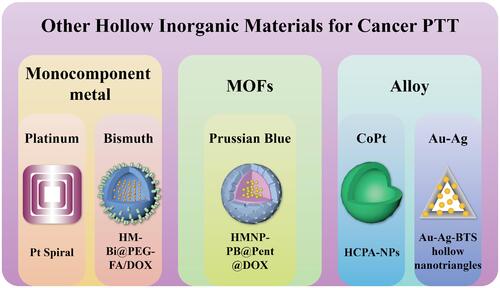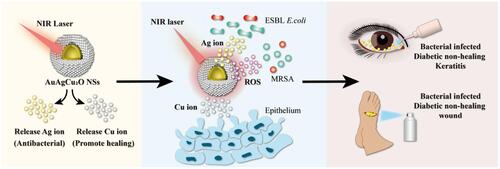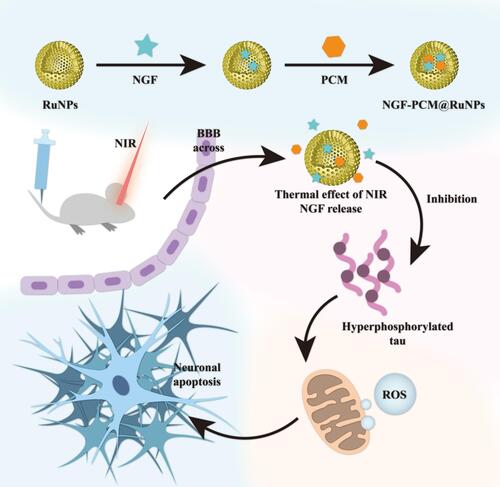Figures & data
Figure 1 Schematic illustration for the PTT-based treatment in cancer, bacterial infections and other diseases including obesity, Alzheimer’s disease and endometriosis. The outside hollow inorganic materials are examples for different diseases treatment.

Table 1 Summary for Recently Developed Hollow Inorganic Nanostructures for PTT-Based Cancer Treatment
Figure 2 (A) Schematic of membrane fusion and coating. Membrane materials are derived from RBCs and B16-F10 cells and then fused together. The resulting hybrid membrane is used to camouflage DOX-loaded hollow copper sulfide nanoparticles (DCuS NPs) to produce DCuS@[RBC−B16] NPs. (B) Synergistic photothermal/chemotherapy of melanoma. Data from Wang et al.Citation52
![Figure 2 (A) Schematic of membrane fusion and coating. Membrane materials are derived from RBCs and B16-F10 cells and then fused together. The resulting hybrid membrane is used to camouflage DOX-loaded hollow copper sulfide nanoparticles (DCuS NPs) to produce DCuS@[RBC−B16] NPs. (B) Synergistic photothermal/chemotherapy of melanoma. Data from Wang et al.Citation52](/cms/asset/7b1a072a-3657-4ff7-aefd-b618fe6db132/dijn_a_12192177_f0002_c.jpg)
Figure 3 Summary for other hollow inorganic materials for cancer PTT, including monocomponent metals, MOFs and alloys.

Figure 4 Near-Infrared (NIR)-Activated AuAgCu2O Nanoshells for Antibacterial-Resistant Bacterial Killing and Improved Wound Healing. The prepared AuAgCu2O NSs could release copper ions and silver ions under NIR laser irradiation. Consequently, multi-drug-resistant bacteria can be efficiently damaged through a synergistic antibiotic-photothermal strategy with silver ions and local high temperature, and the released copper ions could promote the re-epithelialization process, eventually accelerating the recovery of the nonhealing wound and keratitis. Data from Ye et al. Citation117

Figure 5 NGF-PCM@Ru NPs were used to cross BBB under NIR irradiation, and then PCM triggered the release of NGF in response to thermal effects, thereby achieving reduction of ROS production and mitigation of neuronal damage by inhibiting tau hyperphosphorylation. Data from Zhou et al.Citation135

